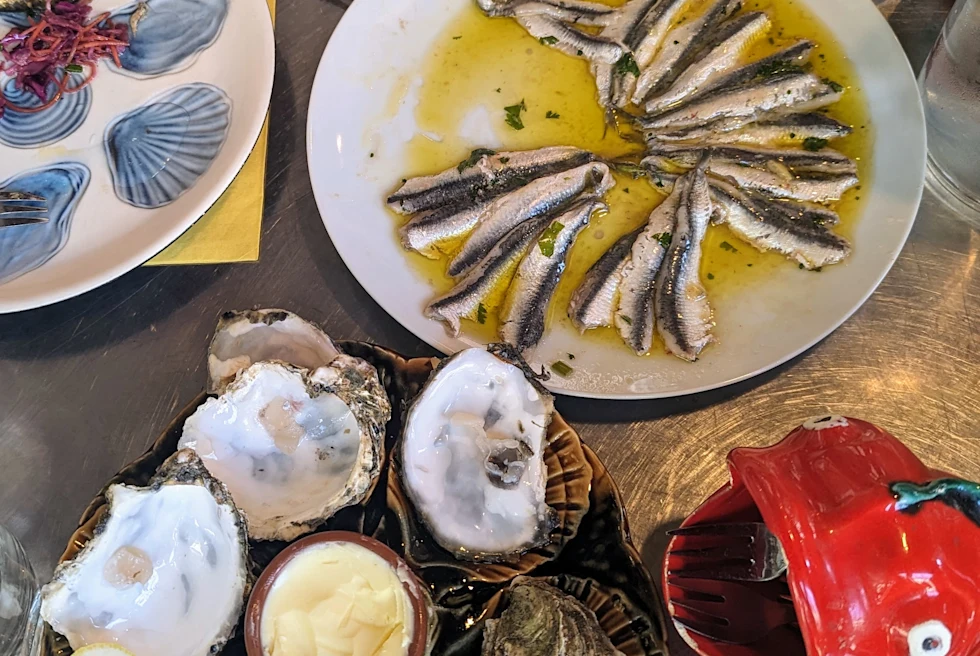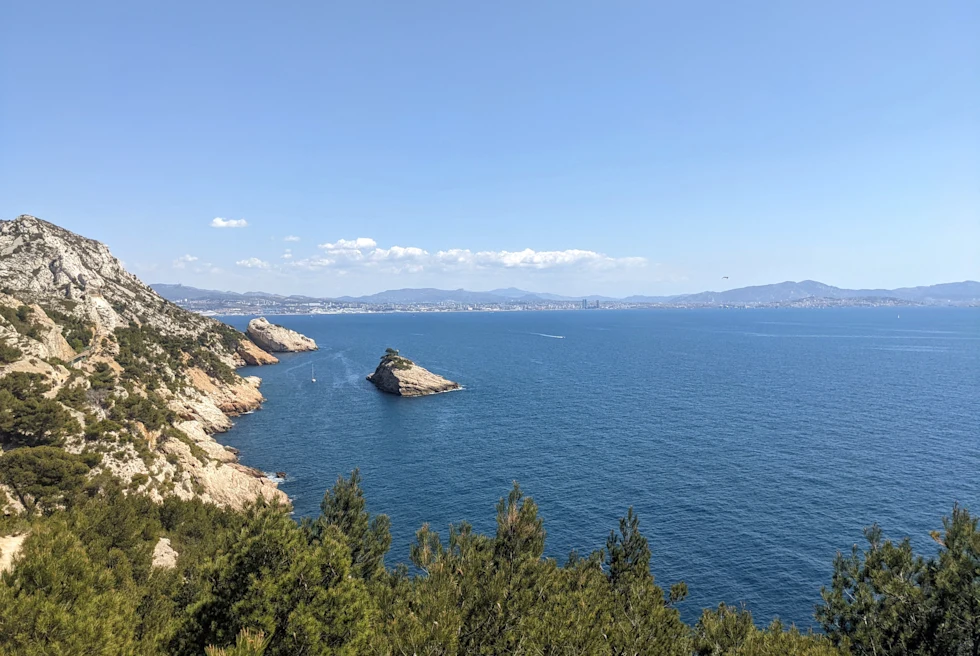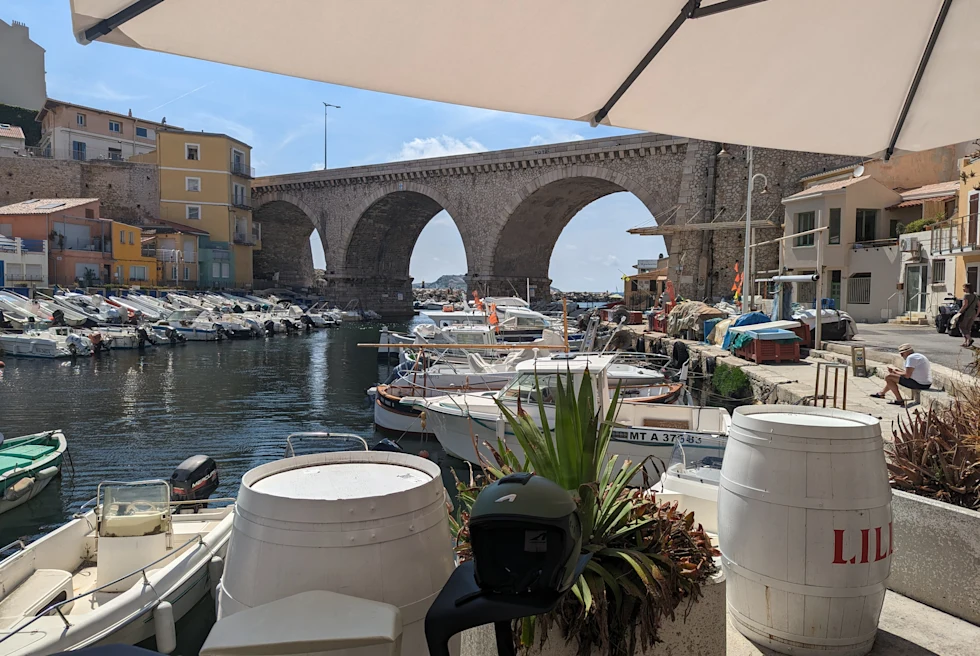
Curator’s statement
I don’t think you can truly understand modern France until you’ve been to Marseille, the country’s most ancient city. It is what I would consider a liminal space, a cultural and geographic borderland that challenges our expectations of what–and who–France is. Yes, the Marseillais speak French, but it’s French with a strong accent born of waves of immigration from throughout the greater Mediterranean and African worlds. To paraphrase a local tour guide, “Marseille is not a French city on the Mediterranean. It is a Mediterranean city in France.” If you mention to a French person that you are headed to Marseille or would like to visit, don’t be surprised if you are met with surprise, dire warnings and opinions loaded with stereotypes. Don’t listen. Visit anyway and judge for yourself. Maybe it will not be your favorite cup of tea, but it is a tea that is worth sampling.
The Fora Difference
Book with Tiffany to access exclusive perks and experiences on your trip.
Killer perks
Free upgrades, spa credits and more—we got you
Personalized recs
Customized travel planning for your style
Insider knowledge
Expert advice from people who’ve actually been there
Where to stay
Unlock perks by contacting Tiffany to book your trip.
Day 1: Backstreets city tour

If you’re passing through Marseille as part of a cruise itinerary or as a rest stop on your way to another part of France or Europe, the best way to get a thorough orientation to the city is to join the Culinary Backstreets tour, Beyond Bouillabaisse: Diving Into Marseille’s Multicultural Stew. Led by a passionate local guide, the tour provides balanced insight into the history, culture and politics of the city through the culinary contributions of its many waves of migrants.
Top the day off with a visit to the Basilica Notre-Dame de la Garde, the locally beloved church that sits on the central city’s highest hill. The church is impressive in and of itself, but it has the added bonus of 360-views of the cityscape, the Mediterranean, and the adjacent mountains. It’s only from here that you can get a full sense of the city’s density and geography.
Day 2: Les Calanques

Many travelers use Marseille as a jumping-off point for visiting Les Calanques, the series of coves and limestone cliffs that carve into the coast to the east and west of the city. If you have a second day in town, you should definitely set aside time to explore its natural wonders. Here are some options to choose from:
The Heart of Calanques National Park: located to the east of Marseille, this is where you will find the most dramatic scenery, but the calanques here are also the most complicated to access without a well-thought-out plan. Joining a guided boat or hiking tour is the easiest and safest way to visit.
The Blue Coast: Take a train westward to the Blue Coast (le Côte Bleue) and then hike your way from calanque to calanque until you’re ready to go back to the city. There are one or two places on the trail that are particularly steep, but even if you decide to skip those sections and turn around you’ll still be blessed with beautiful views coming and going.
Îles de Frioul: Two miles off the coast, the calanques found on these islands are not nearly as tall or dramatic as the others, but they are considered part of the national park and are the easiest to access. Catch a ferry from Vieux Port and you’ll be there in a half-hour.
No matter which option you choose, bring your bathing suit if you think you might be tempted to swim. Drinking water, sun protection and sturdy shoes are a necessity!
Day 3: Vieux Port to La Corniche

Before it gets too crowded, climb the hill east of Vieux Port to Le Panier, Marseille’s oldest neighborhood. If you’re a particularly studious traveler, you can download an audio tour of the neighborhood. Otherwise, just enjoy the street art as you wander aimlessly through its narrow corridors.
Walking up le Canabière is a great way to soak up the Marseillaise flavor as the street transitions from a tourism zone to an ethnic melting pot to a gathering place for young hipsters and migrants from Paris. If you want to go further, you can continue up Boulevard Longchamp and relax on the front lawn of Parc Lonchamp with the locals.
End your day with a stroll along the Corniche Kennedy as far as the Vallon des Auffes to take in the ocean views and see how the Marseillaise enjoy coastal living. Stop for a glass of wine, pastis or homemade iced tea and reflect on the highlights of the past three days.
Now you are qualified to judge Marseille.

Travel Advisor
Tiffany McClain

Get in touch with Tiffany
Did you like this guide? Reach out to customize and book your own experience. Or, just to chat about travel in general.
You can expect a response from Tiffany within 1–2 business days. You’ll also be subscribed to our traveler newsletter (you can unsubscribe at any time).